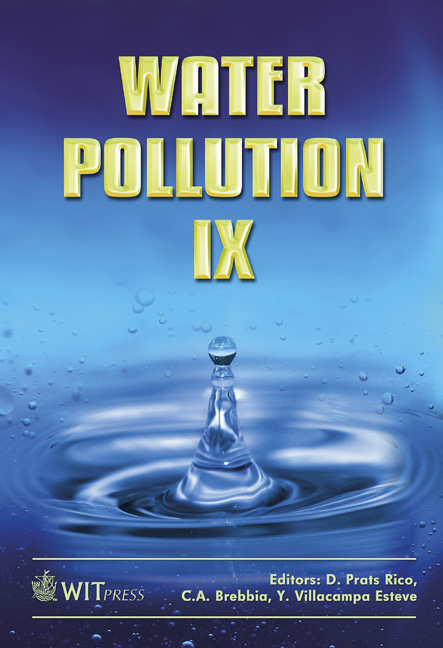The Influence Of Dissolved Oxygen On Growth And Degradation Of Cypermethrin By Pseudomonas Using A Biosimulator
Price
Free (open access)
Transaction
Volume
111
Pages
10
Page Range
501 - 510
Published
2008
Size
305 kb
Paper DOI
10.2495/WP080491
Copyright
WIT Press
Author(s)
S. Jilani
Abstract
Cypermethrin, a least water soluble pesticide, was selected because such compounds are very difficult to remove from environmental systems by conventional means. In this study, Pseudomonas strain (IES-Ps-1) was used to assess its potential for Cypermethrin degradation. Continuous agitation of a wastewater sample in biosimulator was found to be suitable for growth as well as the metabolism of Cypermethrin by Pseudomonas. At optimum temperature (28- 30ºC) using 8-9 mg/L dissolved oxygen (DO), >85% degradation of Cypermethrin was achieved after 48 hours when the initial added concentration was 80 mg/L. In contrast, at 5-6 mg/L DO, only 38% degradation occurred. When the concentration of DO further increased from 9 to 12mg/l, no pronounced effect on the removal efficiency was observed. Results were confirmed by COD and HPLC analysis. Moreover, during treatment, no significant effect of pH change was observed and the pH remains between 7.3 and 8.8. The findings suggest that IES-Ps-1 strain could effectively be used for the removal of pesticide waste. Keywords: Cypermethrin, Pseudomonas, degradation, agitation, wastewater, biosimulator, dissolved oxygen, pesticide waste. 1 Introduction In Pakistan, insecticides, particularly Cypermethrin, are mainly used for cotton crop protection and for forestry and public health management. The very low water solubility of Cypermethrin and relatively high lipoaffinity indicate a strong bioconcentration potential in aquatic organisms when available as solute [1,2].
Keywords
Cypermethrin, Pseudomonas, degradation, agitation, wastewater, biosimulator, dissolved oxygen, pesticide waste.





